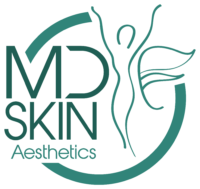Chemical peels
A chemical peel is a procedure in which a chemical solution is applied to the skin to remove the top layers. The skin that grows back is smoother. With a light or medium peel, you may need to undergo the procedure more than once to get the desired results.
Chemical peel uses:
Used to treat wrinkles, discolored skin and scars — usually on the face.
They can be done alone or combined with other cosmetic procedures.
They can be done at different depths, from light to deep. Deeper chemical peels offer more-dramatic results but also take longer to recover from.
A chemical peel is a skin-resurfacing procedure. Depending on the issues you’re addressing with the procedure, you’ll choose a chemical peel in one of three depths:
Light chemical peel
A light (superficial) chemical peel removes the outer layer of skin (epidermis). It’s used to treat fine wrinkles, acne, uneven skin tone and dryness. You might have a light peel every two to five weeks.
Glycolic Acid Peel
Glycolic acid is the most common acid used in light chemical peels. It’s the gold standard as it’s one of the best-performing chemical exfoliants. Glycolic acid belongs to the alpha-hydroxy acids family, commonly known as AHAs.
This acid is derived from sugar cane. And it has the tiniest molecular structure. This makes the acid penetrate the skin very deep and very fast.
When used in a light peel, it dissolves the bond holding the dead skin cells together and breaks them apart. That way, it exfoliates the outer layer of the skin.
Glycolic acid peels treat superficial pigmentation and fade dark spots. They clarify the skin and brighten up the texture. Additionally, they soften fine lines and wrinkles and reveal younger-looking skin.
Even though glycolic acid peels are ideal for all skin types, they can be irritating for dry and sensitive skin. It’s mostly suitable for normal and combination skin. But all in all, a light glycolic acid peel is the gentlest chemical peel you can get.
Lactic Acid Peel
Lactic acid is also an alpha-hydroxy acid and it’s derived from milk. It’s another effective exfoliant like glycolic acid. But the difference is that lactic acid has a larger molecular size. This makes it less penetrating but less irritating as well.
Lactic acid is used in light peels when glycolic acid can be too sensitizing. That’s why it’s the ideal peel for sensitive skin types. Lactic acid peel offers gentle exfoliation of the outer layer of the skin.
Similar to glycolic acid, it improves your complexion by clarifying the skin, evening out the skin tone, and shrinking enlarged pores.
It gently resurfaces the skin, improves the look of superficial lines, and it’s super helpful in revitalizing dull and tired skin.
Lactic acid peels are ideal for dry and sensitive skin types as lactic acid is the most gentle acid and isn’t aggressive like the other ones. It also has hydrating effects on the skin.
Salicylic Acid Peel
Salicylic acid belongs to the beta-hydroxy acids family (BHAs) and is derived from willow bark. The difference between the two hydroxy acids is that AHAs are water-soluble whereas BHAs are oil-soluble.
That’s why a salicylic acid peel works best for oily skin (4). Apart from the anti-aging properties, salicylic acid has anti-inflammatory properties as well.
It’s the ideal peel to treat mild acne and congested skin. It exfoliates the outermost layer of the skin, cleans the debris clogging the pores, and removes acne-causing bacteria.
It balances out oil production, improves enlarged pores, and prevents breakouts. Salicylic acid peel is ideal for oily and acne-prone skin and can be combined with other acids as well.
Lactic acid is used in light peels when glycolic acid can be too sensitizing. That’s why it’s the ideal peel for sensitive skin types. Lactic acid peel offers gentle exfoliation of the outer layer of the skin.
Similar to glycolic acid, it improves your complexion by clarifying the skin, evening out the skin tone, and shrinking enlarged pores.
It gently resurfaces the skin, improves the look of superficial lines, and it’s super helpful in revitalizing dull and tired skin.
Lactic acid peels are ideal for dry and sensitive skin types as lactic acid is the most gentle acid and isn’t aggressive like the other ones. It also has hydrating effects on the skin.
Medium chemical peel
A medium chemical peel removes skin cells from the epidermis and from portions of the upper part of your middle layer of skin (dermis). It’s used to treat wrinkles, acne scars and uneven skin tone. You might need to repeat the procedure to achieve or maintain the desired result.
TCA Peel
TCA refers to trichloroacetic acid. Depending on the strength and the concentration of the acid used, TCA can also be classified as a deep peel.
A TCA peel causes more irritation but gives equally dramatic results. It’s a great anti-aging treatment because the peel promotes collagen growth and skin renewal on a much deeper level.
TCA doesn’t work like, say, a glycolic acid peel. Because TCA behaves differently and that’s why it’s stronger than the acids used in light peels. TCA peels create a slight frosting on the skin when applied to the skin.
It treats moderate signs of photoaging, wrinkles, mild to severe sun damage, acne scars, pigmentation issues, and other skin issues that need a more aggressive intervention
Deep chemical peel
A chemical peel. A deep chemical peel removes skin cells even deeper. Your doctor might recommend one for deeper wrinkles, scars or precancerous growths. You won’t need repeat procedures to get the full effect.
Phenol Peel
A phenol peel is the strongest type of chemical peel. This procedure requires a certified physician and can only be done once in a lifetime.
They’re not common procedures as the recovery time can take up to several months. This means that there’s a greater risk of infection and other complications.
Among all types of chemical peels, phenol peel gives the most dramatic results. The acid used in this peel penetrates deeper layers of the skin and treats advanced signs of aging, very deep-set wrinkles, loose skin, severe sun damage, and pigmentation.
It’s more common among people aged 50+. Some deep peels even require sedation. At this point, deep peels are not as common as there are less painful and more practical ways to treat those age-related skin issues.
Chemical peels can’t remove deep scars or wrinkles or tighten sagging skin.

